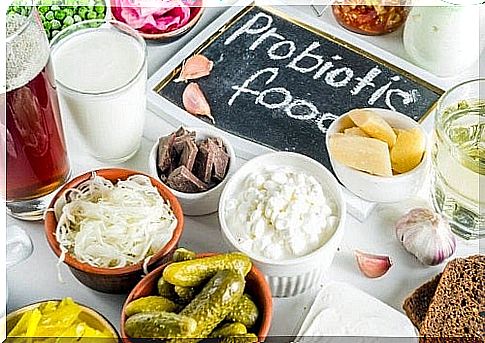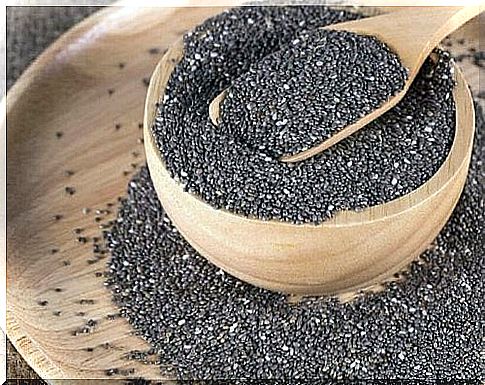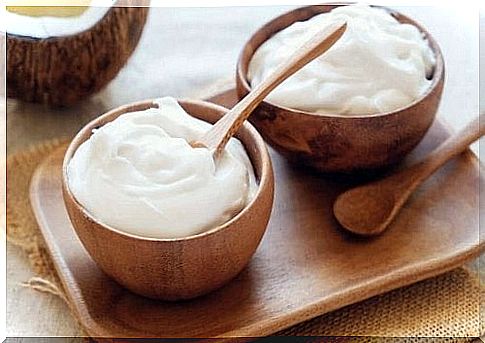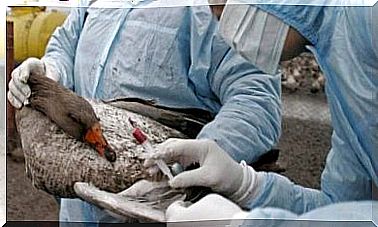What Is The Difference Between Prebiotics And Probiotics?

Although both are good for health, the difference between prebiotics and probiotics lies in the functions they perform and the foods they contain.
Millions of microbes live in our body, making up the microbiota. A large part of them are in the intestines, being known as the intestinal flora. Intestinal bacteria fall into two categories: harmful and beneficial. The former can cause problems such as diarrhea, infections or even intestinal rot. Instead, beneficial bacteria:
- I keep the harmful ones under control
- Stimulates the immune system
- Reduce the presence of intestinal gas
- Improve digestion
In addition, the human body needs beneficial bacteria to synthesize certain vitamins and absorb nutrients. Therefore, in order to enjoy an optimal state of health, it is very important to keep our intestinal flora healthy and balanced. What is the role of prebiotics and probiotics in this process? In the following, we will explain in detail.
The main difference between prebiotics and probiotics
In order to keep your intestinal flora in optimal condition, you must meet two conditions:
- Eat probiotic foods to increase your supply of beneficial microorganisms.
- Eat prebiotic foods so that those beneficial microorganisms have enough food.
These conditions also sum up the difference between prebiotics and probiotics. In the following, we will present more information on this topic, including what are the main prebiotic and probiotic foods.
Prebiotics, the “food” of the intestinal flora

Prebiotics are indigestible food ingredients that end up intact in the colon. There, they become food for intestinal bacteria that can produce the enzymes needed to break them down. Prebiotics help intestinal bacteria to grow and support their functions, bringing benefits to the host (in this case, humans).
A food is considered prebiotic if it meets three conditions:
- It cannot be broken down or absorbed in the stomach or small intestine.
- Once it reaches the colon intact, bacteria in this region can ferment it.
- The fermentation process must promote the activity and proliferation of intestinal bacteria beneficial to the human body.
To date, the most studied prebiotics are the fibers in plant foods, especially fructooligosaccharides, galactooligosaccharides and inulin.
But we can find beneficial substances for the intestinal flora in many foods:
- Some fibers from onions, leeks, asparagus, artichokes, chia and flax seeds, potatoes, carrots and apples, among others;
- Cocoa polyphenols, berries and spices;
- Fats in olive oil, oily fruits or fatty fish.
What are probiotics?
Now that you know what prebiotics are, it’s time to find out more about probiotics so you can understand the difference between them. First, the word “probiotic” means “pro-life.”
The best known definition of probiotics has been formulated by the World Health Organization (WHO) and the Food and Agriculture Organization of the United Nations. According to them, probiotics are “living microorganisms that, once administered in adequate amounts, provide benefits to the health of their host.”
This is not about feeding the microbiota, but about supplying it with new bacteria. Most probiotics are bacteria useful in fermentation. The most studied belong to the species Lactobacillus and Bifidobacterium .
You can get probiotics by consuming certain foods or dietary supplements.
The main probiotic foods

One of the cheapest probiotic foods is yogurt. You should not combine it with any other ingredient, because a simple quality yogurt will contain both lactobacilli and streptococci. Kefir is also an excellent variant, as it is rich in different types of bacteria.
Another useful source of probiotics is fermented vegetables, such as sauerkraut, pickles and pickles. In addition, Asian cuisines offer us miso (fermented soybean paste) and tempeh (fermented soybeans). Last but not least, an unexpected source of probiotics is Kombucha, a slightly acidic drink that has become very popular.
conclusions
The best way to sum up the difference between prebiotics and probiotics is to say that they have different but complementary roles. So, your body will not gain if you choose to eat only probiotic foods, but do not feed the bacteria thus obtained with prebiotics.
Try to keep up to date with the latest scientific discoveries. There are more and more studies on prebiotics and probiotics, and researchers are getting new information on a regular basis.









